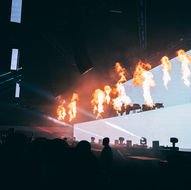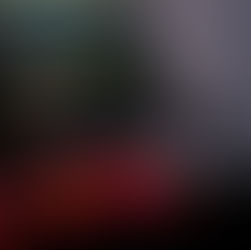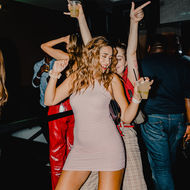The Rise of New Global Pop Icons
- Kgopotso Msimanga

- Oct 18
- 3 min read
In 2025, the pop music landscape is being reshaped by a dynamic generation of artists who are not only redefining the sound of pop but also its cultural significance. From genre-blending innovators to boundary-pushing performers, these emerging stars are capturing the global spotlight and setting new standards for what it means to be a pop icon.

A Global Phenomenon
The new wave of pop icons is characterized by their international appeal and diverse backgrounds. Artists like Sabrina Carpenter, Charli XCX, Chappell Roan, and Chrissy Chlapecka have emerged as leading figures in the global pop scene. Carpenter's album Short n' Sweet showcased her evolution from a Disney star to a bold pop icon, embracing themes of self-expression and empowerment. Charli XCX's Brat album pushed the limits of hyperpop,
collaborating with artists like Caroline Polachek and Billie Eilish to create a sound that is both experimental and mainstream. Chappell Roan's unique blend of country and pop has garnered critical acclaim, while Chrissy Chlapecka's Girlie Pop EP embraced hyper-femininity and camp, challenging traditional gender norms in pop music.
These artists are not just making music; they are shaping a new cultural narrative in pop. Their work reflects a generation that values authenticity over conformity, diversity over homogeneity, and creativity over commercialism.
Breaking the Mold: New Approaches to Pop
The traditional pop star image—polished, marketable, and often manufactured—is being replaced by a more organic and personal approach. Artists are taking control of their narratives, from songwriting to production, and are engaging directly with their audiences through social media and live performances.
This shift is evident in the music itself. Genres are blending more than ever before, with elements of hyperpop, indie, R&B, and electronic music coexisting in a single track. Producers are experimenting with unconventional sounds and structures, moving away from the formulaic pop song format. This has led to a more dynamic and diverse pop landscape, where innovation is celebrated and commercial success is no longer the sole measure of an artist's worth.
The Role of Social Media and Streaming Platforms
Platforms like TikTok and Spotify have played a crucial role in the rise of these new pop stars. TikTok allows artists to share snippets of their music and connect with fans in a more personal and immediate way. Songs that go viral on TikTok often translate into streaming success, bypassing traditional radio and label-driven promotion.
Streaming platforms have also democratized music discovery, allowing listeners to explore a wider range of artists and genres. This has led to a more fragmented but richer pop music scene, where niche genres and independent artists can thrive.
The End of an Era: The Decline of Traditional Pop Icons
As the new generation of pop stars rises, some of the industry's longtime heavyweights have struggled to maintain their relevance. Katy Perry's 2024 album 143 was met with critical and commercial disappointment, signaling a shift in audience tastes and expectations. This decline of traditional pop icons underscores the changing dynamics of the music industry, where innovation and authenticity are increasingly valued over established fame.
Looking Ahead: The Future of Pop
The future of pop music looks bright and boundless. With a new generation of artists pushing the boundaries of genre, identity, and creativity, pop is becoming more inclusive, experimental, and reflective of the diverse world we live in. As these artists continue to rise, they will undoubtedly shape the next era of pop music, rewriting the rules and setting new standards for what it means to be a pop star.
In conclusion, the new pop royalty is not defined by their commercial success or adherence to industry norms but by their ability to connect with audiences through authenticity, creativity, and a willingness to challenge the status quo. This generation is rewriting the rules, and the future of pop music has never looked more exciting.































Comments